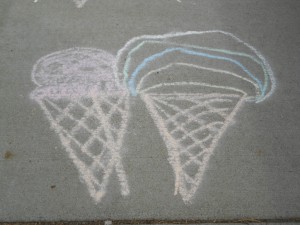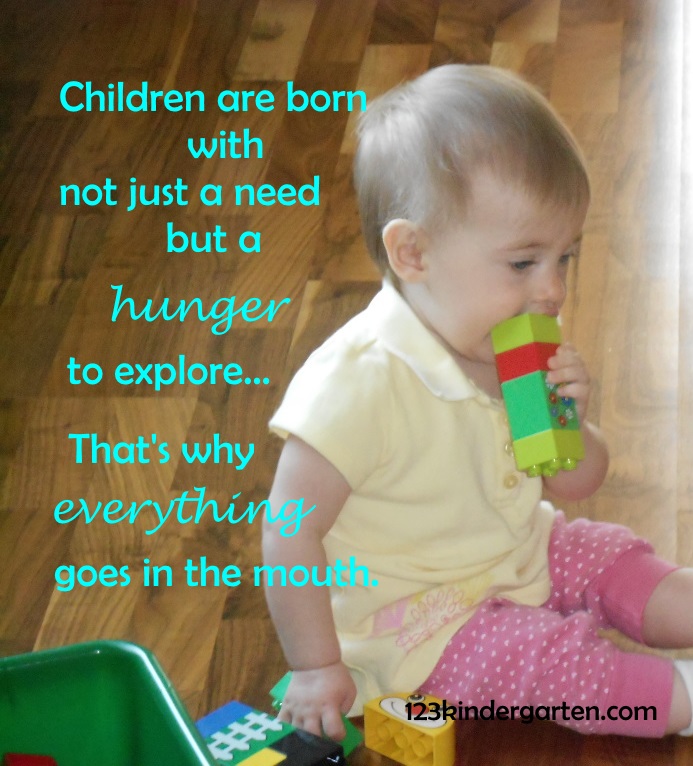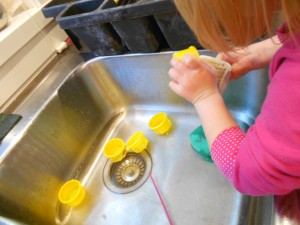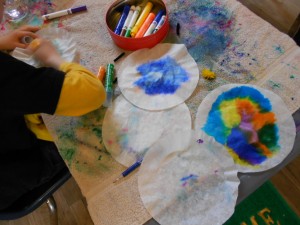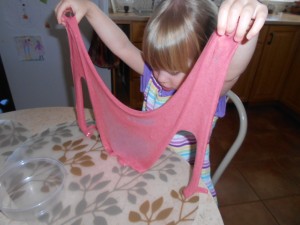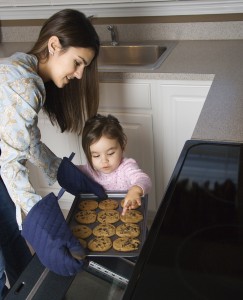Have you heard or read that some doctors are writing prescriptions for kids with the orders: Go Outside and Play? There is so much that kids can do outside, especially in summer. This is a series of posts on different ways of having fun outside for kids that supports early learning and later kindergarten readiness. Today is math fun.
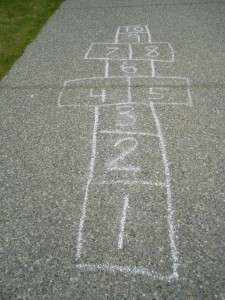 Children learn thru their experiences, especially the hands-on activities. How about some feet-on ones? When walking with kids, count the number of steps, or maybe the number of cars on the street, or trees that look like Christmas trees. In the yard, kids can count the number of times they can jump. If they are able, they might want to check how many times they can jump on just 1 foot. Hopscotch is a great game to play for matching the written form of a number to it’s name.
Children learn thru their experiences, especially the hands-on activities. How about some feet-on ones? When walking with kids, count the number of steps, or maybe the number of cars on the street, or trees that look like Christmas trees. In the yard, kids can count the number of times they can jump. If they are able, they might want to check how many times they can jump on just 1 foot. Hopscotch is a great game to play for matching the written form of a number to it’s name.
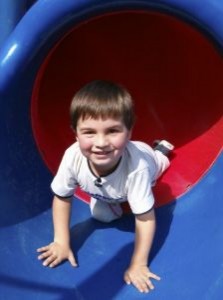 When riding on the bus or in a car, kids can look for shapes. Some houses have points like a triangle. Are there any things that look like circles? This part of a playground is a big circle.
When riding on the bus or in a car, kids can look for shapes. Some houses have points like a triangle. Are there any things that look like circles? This part of a playground is a big circle.
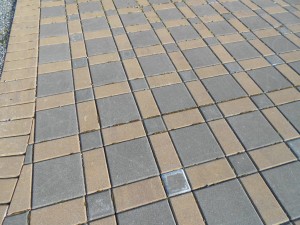 Sometimes, there are patterns made out of shapes, like this driveway. Recognizing patterns is a complex thinking skill that helps with remembering and sequencing.
Sometimes, there are patterns made out of shapes, like this driveway. Recognizing patterns is a complex thinking skill that helps with remembering and sequencing.
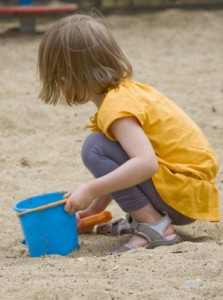 In the sandbox, filling containers is math play. Kids learn that it takes many small bits to make one large amount. They use such math concepts as more and less, full and empty (zero).
In the sandbox, filling containers is math play. Kids learn that it takes many small bits to make one large amount. They use such math concepts as more and less, full and empty (zero).
Rocks are great to use for numbers and for size. What rocks are big, which ones are small? Size isn’t always straightforward. Even a small rock can be bigger than a really tiny one, or a rock that’s so big it’s too heavy to lift can be much smaller than a really big rock.
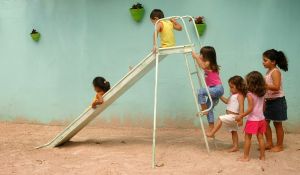 The ladder on the slide goes up in a series of steps, a regular distance apart. Numbers go up the like a ladder and down like the slide. Taking turns is a way to practice one-by-one. As we count, the numbers go up by just one each time.
The ladder on the slide goes up in a series of steps, a regular distance apart. Numbers go up the like a ladder and down like the slide. Taking turns is a way to practice one-by-one. As we count, the numbers go up by just one each time.
These activities are exactly what the doctor ordered: play outside, plus they combine fun and learning. What other ways can kids have math fun outside?


